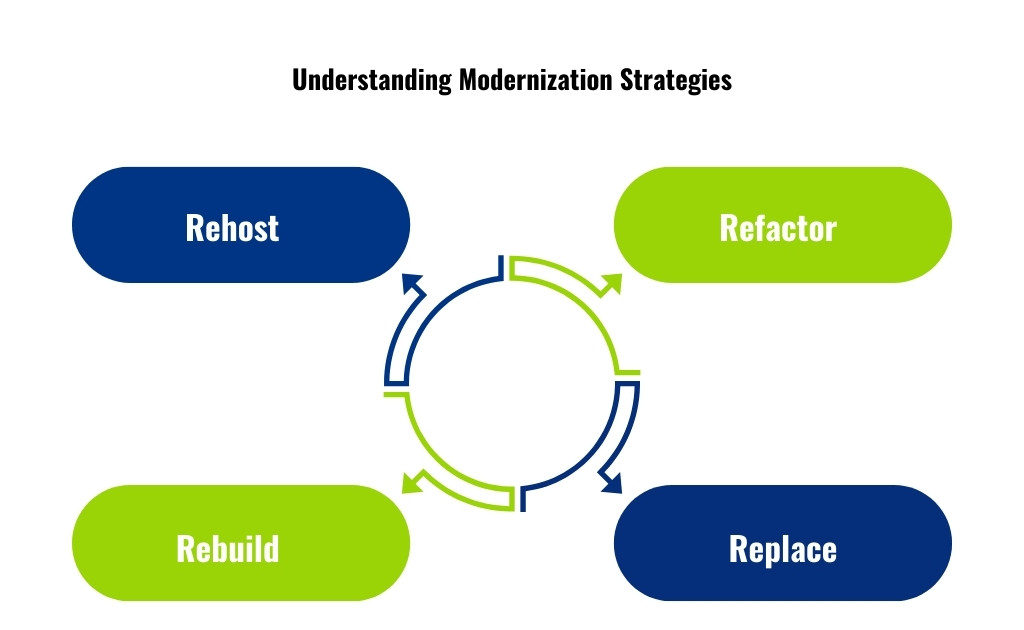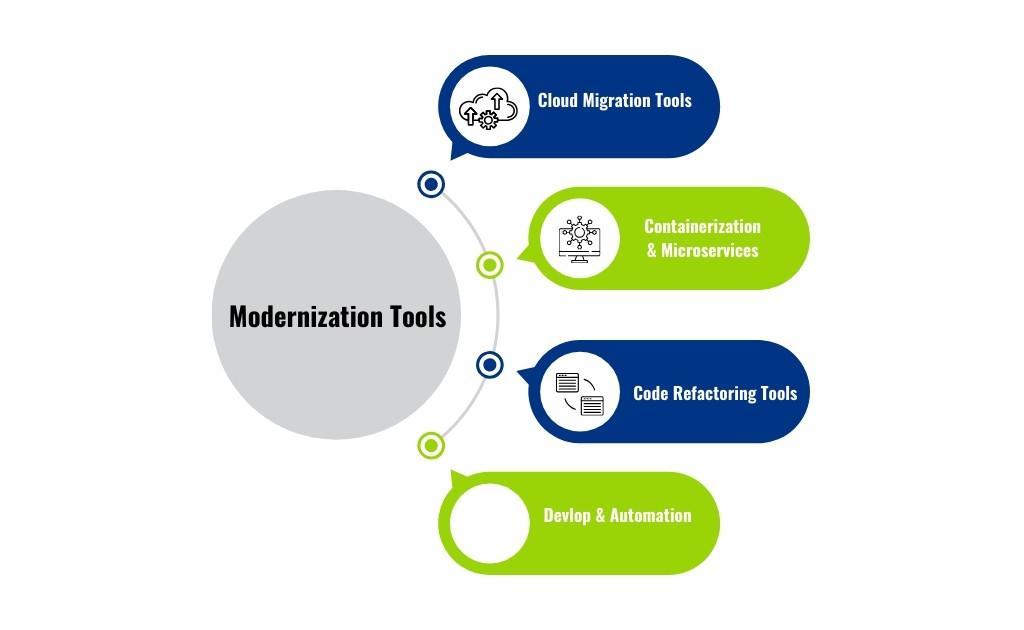Imagine your legacy code as a well-worn path in a complex maze. It’s a route that once got you where you needed to go, but now it’s outdated, riddled with dead ends, and no longer efficient. To stay ahead in today’s fast-paced digital world, you need new directions—new tools to modernize that old code and keep your business moving forward.
Application modernization is no longer a choice but a necessity for businesses aiming to remain competitive. As technologies evolve, so do the demands on software, making the modernization of legacy applications crucial for maintaining agility and relevance. This blog will walk you through the maze of application modernization tools, helping you find the right ones to breathe new life into your legacy systems.
The Legacy Code Conundrum
The Problem with Legacy Code
Legacy code, much like that old path in a maze, presents several challenges. These outdated systems are often difficult to maintain, riddled with security vulnerabilities, and lack the scalability needed to support modern business needs. They can become a significant drain on resources, requiring constant patches and workarounds just to keep running.
The Need for Modernization
Modernizing legacy applications is essential for businesses aiming to reduce technical debt and stay competitive. By updating these systems, companies can improve performance, enhance security, and ensure that their software can scale alongside business growth. Modernization also opens the door to new technologies and innovations, enabling businesses to leverage the latest tools and practices.
Mapping the Maze: Understanding Modernization Strategies
When it comes to application modernization, there isn’t a one-size-fits-all approach. Instead, businesses can choose from several strategies, each offering different benefits depending on the specific needs and goals of the organization.
- Rehost: Often referred to as “lift and shift,” rehosting involves moving applications to a new infrastructure without altering the code. It’s a quick and cost-effective way to modernize, though it may not address deeper issues within the codebase.
- Refactor: This strategy involves making changes to the existing code to improve performance, scalability, and maintainability. It’s ideal for businesses that need to update specific aspects of their applications without a complete overhaul.
- Rebuild: Rebuilding involves rewriting the application from the ground up, using modern languages and frameworks. While this is the most resource-intensive option, it offers the greatest flexibility and ensures the application is fully aligned with current business needs.
- Replace: Sometimes, the best option is to replace a legacy application with a new solution entirely. This can be a commercial off-the-shelf (COTS) product or a custom-built application tailored to the business’s unique requirements.

Choosing the Right Path
The key to successful modernization lies in choosing the right strategy based on your business goals, budget, and the current state of your legacy systems. Aligning your modernization efforts with these factors will help ensure a smooth transition and maximize the return on investment.
Modernization Tools: The New Tricks for Old Code
Now that you have a roadmap, let’s explore the tools that can help you navigate your modernization journey.
Cloud Migration Tools
Migrating to the cloud is a crucial step for modernizing legacy applications, and at DBI360, we provide a comprehensive suite of tools to make this process seamless. In addition to leveraging industry-leading platforms like AWS, Azure, and Google Cloud, DBI360 offers specialized tools such as ZylerERP for efficient data migration, AsterDocs for document management during the transition, and NexusPlatform for advanced data analytics and monitoring. These tools, combined with our cloud expertise, ensure that your applications are not only migrated smoothly but also optimized for scalability, performance, and cost-efficiency in the cloud.
Containerization and Microservices
Breaking down monolithic applications into microservices can dramatically improve flexibility and scalability. Tools like Docker, Kubernetes, and OpenShift enable containerization, allowing you to run and manage applications in isolated environments that are easier to deploy and scale.
Code Refactoring Tools
For those looking to clean up and optimize their legacy code, tools like SonarQube and JRebel are invaluable. These tools help identify code smells, bugs, and inefficiencies, making it easier to refactor your applications for better performance and maintainability.
DevOps and Automation
Automation is key to successful modernization, and DevOps tools like Jenkins, Ansible, and Terraform streamline the process. These tools automate tasks such as continuous integration and continuous deployment (CI/CD), ensuring that your applications are always up-to-date and running smoothly.

Navigating Common Pitfalls in Modernization
Modernization is not without its challenges. Here are some common pitfalls to avoid:
Overcomplicating the Process
It’s easy to get carried away with modernization, adopting too many tools or trying to modernize everything at once. Start with a clear plan and focus on the areas that will deliver the most value.
Ignoring Business Impact
While it’s important to focus on the technical aspects of modernization, don’t lose sight of the bigger picture. Ensure that your modernization efforts align with your business goals and deliver tangible benefits.
Underestimating Costs
Modernization can be expensive, so it’s crucial to have a realistic budget. Consider both the immediate costs and the long-term expenses associated with maintaining and scaling your modernized applications.

Success Stories and Lessons Learned
Consider the example of a mid-sized financial services company that successfully modernized its legacy applications using a combination of cloud migration and refactoring. By leveraging AWS and AsterDocs, they were able to reduce their technical debt by 40%, improve application performance, and cut operational costs by 30%.
Key Takeaways
The key lesson here is to choose the right tools and strategies for your specific needs. Don’t try to modernize everything at once—focus on the areas that will deliver the most value and build from there.
Conclusion
Application modernization is a journey, not a destination. By selecting the right tools and strategies, you can navigate the maze of legacy code and emerge with modern, efficient applications that support your business’s growth. Start assessing your legacy systems today, and take the first step towards modernization.
As technology continues to evolve, staying ahead of the trends in application modernization will give your business a competitive edge. Keep exploring new tools and approaches, and don’t be afraid to innovate.

